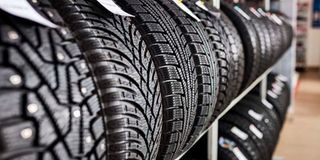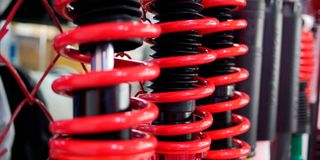Premium
Here’s why car parts live long or die young

A battery life of two to three years is “normal”
In answer to predominant and persistent mailbox questions, here comes a summary of how long various parts of your car should last, with occasional hints on what increases or reduces the frequency of failure.
Leaving aside so-called “regular service” items such as fuel, oil and air filters, spark plugs and lubricants (which are designed for limited life), the bigger parts that tend to wear out relatively often in a vehicle’s lifetime are the battery, the tyres, the shock absorbers, exhaust pipes and rubber bushes and balljoints (and any other metal-on-metal joint that is not properly lubricated).
Battery: Allowing for the variables, if your battery fails in less than one year it is either sub-standard quality, the wrong capacity, or has been misused or not properly maintained. At the other extreme, if it lasts for more than five years, all elements of quality, use and maintenance must be good. A battery life of two to three years is “normal”.
Tyres: Tyre wear depends not only on user treatment (pressure, loading, driving style) and road conditions, but also on tread pattern, wheel size and the hardness of the rubber compound used in manufacture. Chunkier treads wear out (much) faster (especially on high-speed tarmac), big-wheeled tyres rotate less often per kilometer and harder compounds last longer but give less grip. Balance and alignment are important.

Tyre wear depends not only on user treatment (pressure, loading, driving style) and road conditions, but also on tread pattern, wheel size and the hardness of the rubber compound used in manufacture.
On a mid-sized family car with a standard street tread pattern, if tyres wear from new to nearly bald in less than 20,000 kilometers, then usage has been severe and/or some part of the system is out-of-line. If they last more than 80,000 kilometers, then usage has been particularly gentle. A lifespan of about 50,000 kilometers is normal.
Shock absorbers: Shock absorbers of standard rating and correct fit do not “wear out” per se, and if used gently on smooth roads they can last the lifetime of the vehicle, with perhaps a long-term change of the rubber bushes which can perish over many years. However, in Kenya’s mix of road conditions, they may require replacement more frequently, as sustained and sometimes extreme punishment on unsmooth roads causes them to overheat, partially fail and become weak, or completely fail and, or physically break if a bump compresses or stretches them beyond their movement limits. There can be no “normal” lifespan estimate. If your dampers need regular replacement, either their rating is wrong, or the springs are too weak, or use is severe or abusive.
Exhaust pipes: These fall to corrosion and their lifespan will depend on the quality of steel used in manufacture and the prevailing climatic conditions.
At the Kenya Coast, where the atmosphere is humid and often salty, corrosion can be very rapid. An exhaust pipe can rot in as little as one year.
Corrosion is also greater on vehicles which regularly drive on muddy roads - the mud traps moisture next to the metal and promotes faster rusting. The exhaust of vehicles used mostly on tarmac, in dry highland areas, and parked where the underpan will dry rapidly and remain well aired can last for a decade or more, even much more. The integrity of exhaust mountings is also a factor.
The lifespan of bushes, mountings, balljoints and other steering and suspension components is determined primarily by road surface, in tandem with service disciplines of snug/tight fit and appropriate lubrication. With gentle driving on good roads, all these parts can last almost indefinitely. On rough roads or with service neglect, the rate of wear and tear can be very rapid – most especially if the rubber seals on steering and balljoints are torn (check regularly), allowing water and dirt in and lubricant out.
Overloading is also a prime cause of premature wear and failure of bushes and mountings. There’s no “normal” lifespan in this instance.
The electric motors in a vehicle - wipers, fan, window winders - should last the vehicle’s lifetime. Severe maltreatment, decrepit wiring or physical damage are the causes of failure. Dirt and rust on the mechanical items that the electric motors operate (causing excessive resistance to free movement) risk overloading and damaging the motors, especially in door panel cavities. Occasional cleaning and lubrication of the mechanicals is the preventive remedy.
Some attachments such as rubber seals may deteriorate over time. Wiper blades will need frequent replacement if they spend lots of time in sunshine and are not cleaned daily.
The bigger stuff
Good quality upholstery and trim can remain in reasonable condition for the life of a vehicle, though some wear-and-tear on seats and carpets is inevitable. The accelerators of damage are primarily dirt, direct sunshine and, of course, physical mistreatment. Dirt is not only unsightly, it is also abrasive. Regular vacuum cleaning or gentle brushing of seats and carpets, and occasional sponging with a carpet shampoo, and cleaning of plastic parts with a purpose-formulation will keep the insides looking better – and lasting longer. Washable seat covers may be a personal choice, but always use rubber overmats on the floor and park in the shade wherever possible.

If your dampers need regular replacement, either their rating is wrong, or the springs are too weak, or use is severe or abusive.
Modern car paintwork can look good for decades, if it is regularly and properly cleaned and occasionally wax polished. Dirt, sunshine and maltreatment (not time) are the damaging factors. Conventional paints can be restored and protected with polish, and if staining is especially severe, by using a T-cut paste (fine rubbing compound) before waxing. Improved paint chemistry and application techniques make respraying to a good standard a viable and quite long-lasting option if the paintwork is severely decrepit.
Transmission parts: gearbox, clutch (friction and pressure plates), prop shaft joints and differentials will wear only very slightly if kept serviced and used properly, and can last the lifetime of a vehicle. Clutches are the most likely to fail, and usually through ill treatment. Premature gearbox and diff failure indicate poor lubrication, extremely severe driving conditions, or rank bad use. Although diff oils do not get “used up” for many years, they can get contaminated by ingress of water. They should be checked (though not necessarily replaced) for both level and condition at every service. Where greasing is the lubricant, thorough fresh application at every service is important.
Modern engines: Serviced and driven properly, an engine should last at least 100,000 kilometers in good working order, and readily twice that distance before inevitable wear and tear starts to seriously degrade it. At that stage they can often be viably overhauled (bearings, piston rings and cylinder liners are usually first to need replacement, and valves can become choked with carbon deposits). A well overhauled engine should have about half the life of a new one. Harsh driving, overheating and failure to follow stipulated service intervals (using good skills and oils) are the engine killers. Sub-standard or contaminated fuels (especially in diesel engines) can cause anything from accelerated wear to catastrophic failure.
Cooling system: If any defects in the cooling system are left unattended, deterioration and failure can be very rapid (leading also to engine damage). Hoses, radiator pressure caps and thermostats may need replacement after many years. Fanbelts are now very long lasting if well adjusted. Using a dirty coolant can clog the radiator channels and damage the water pump. The life of the whole system, and especially the radiator core, is longest if anti-rust coolant additives/formulations are used, and the radiator is flushed if ever the coolant gets noticeably dirty.
Cleanliness and regular service checks are, as with most components, key extenders of long and reliable life.
There is always ‘a reason why’
With very, very few exceptions, good quality cars that are well driven and properly serviced rarely break and hardly ever need a spare part.
Yes, things like tyres and brake linings wear out, and routine service items such as plugs and filters need regular replacement, but if virtually any other replacement part is needed, unless the garage can show it died a natural death of old age, there should be some explanation as to why it broke.
For a start, the mechanic should want to satisfy himself of the reason before fitting a new part. For example, if the cable for a clutch or handbrake or accelerator has snapped, it is not sufficient to simply replace it and give the owner a bill.
Why did it snap? These parts should never break in the normal life of a vehicle. There must be some special cause for the failure – like a jagged edge of metal rubbing against the cable every time it is used, and that fault needs attention, too, or the new cable is going to break as well.
If the motor on an electric window winder burns out, there will be an underlying reason, say a rusty or bent winding mechanism. If you don’t find and fix that fault, a new motor will burn out, too.
The principle applies to the great majority of parts you end up paying to repair or replace, throughout the vehicle. Simply fixing the consequences is buying more trouble. You also have to fix the cause of the failure – which might be a defect in another related component…or your own conduct. So whenever your car develops a fault or some part breaks, always, always ask yourself (or an expert) “why did it fail?”
Even when a part simply wears out with use, you should want to know why. Would that part have lasted longer if you drove differently, or checked more regularly, or serviced more thoroughly?
If ever the answer to any of those questions is “yes”, then by modifying your behaviour you can change your motoring costs. Only if you know why something has gone wrong can you learn from the experience and take practical steps to prevent the same problem arising again. Your garage should be able and willing to help. And whenever you pay a bill, you will be getting added value in education.
Bills can get even less frequent and less expensive if you ask “why?” before things go badly wrong. If you notice any change in the way your car runs, or looks, or smells, or feels, or sounds…try to figure out or find out “why”.
Mechanical expertise is often not necessary to notice and trace a change, and almost any change is almost always a signal of an incipient problem. Prompt attention can often prevent or rectify the fault swiftly and inexpensively. Leaving the “change” to progress unattended will almost always lead to a major failure and very much higher remedial costs.
Do you have a motoring question, email [email protected]





